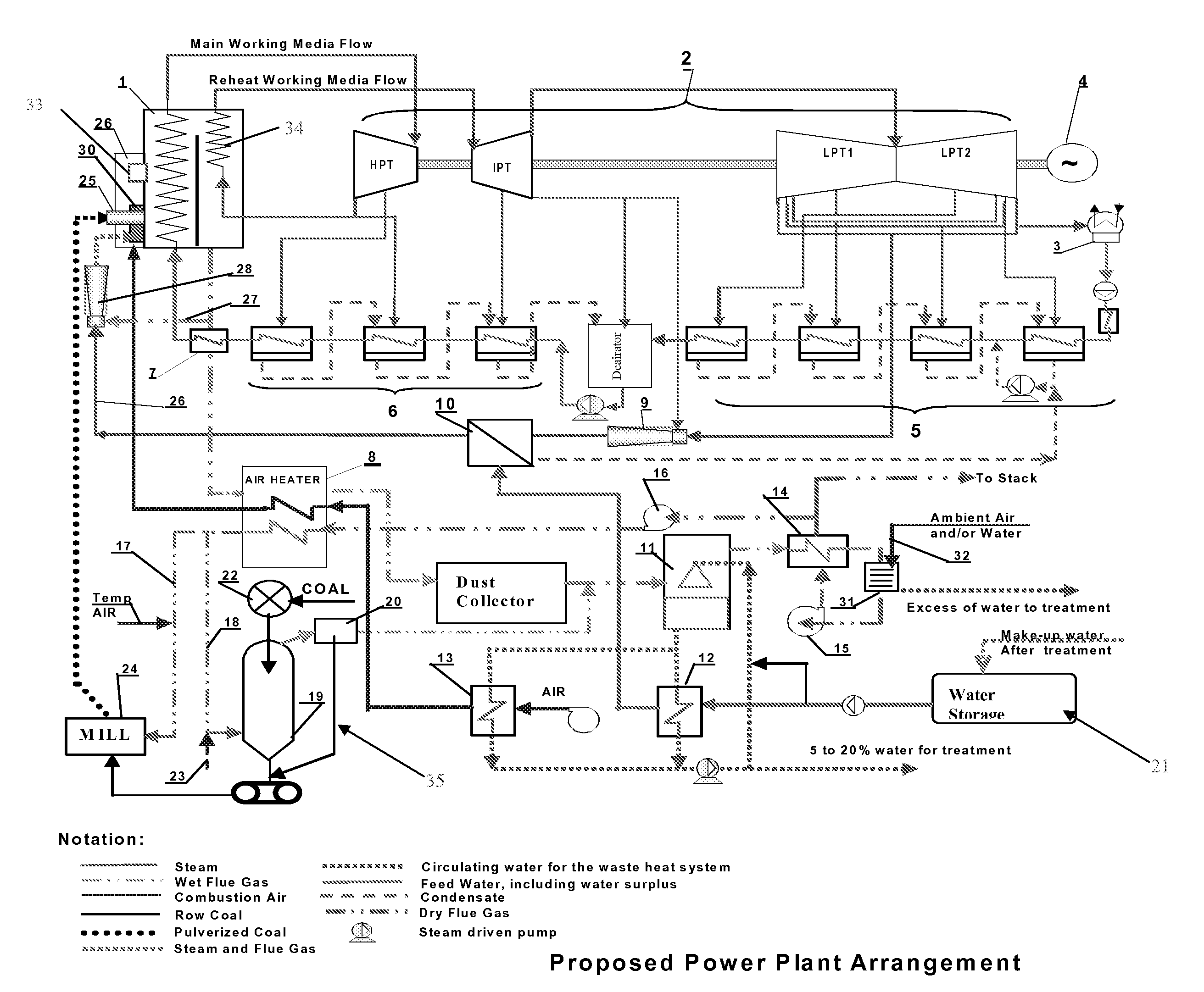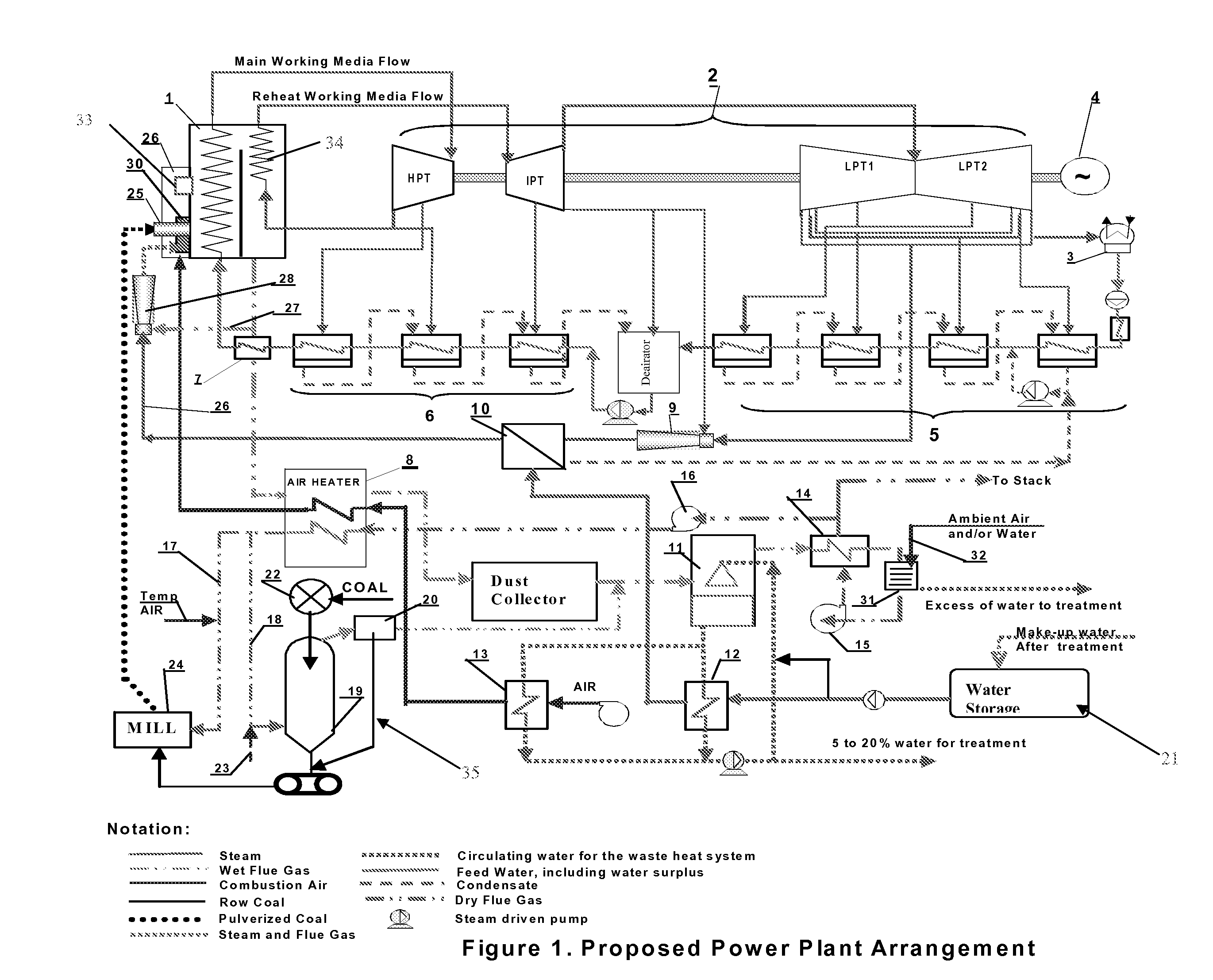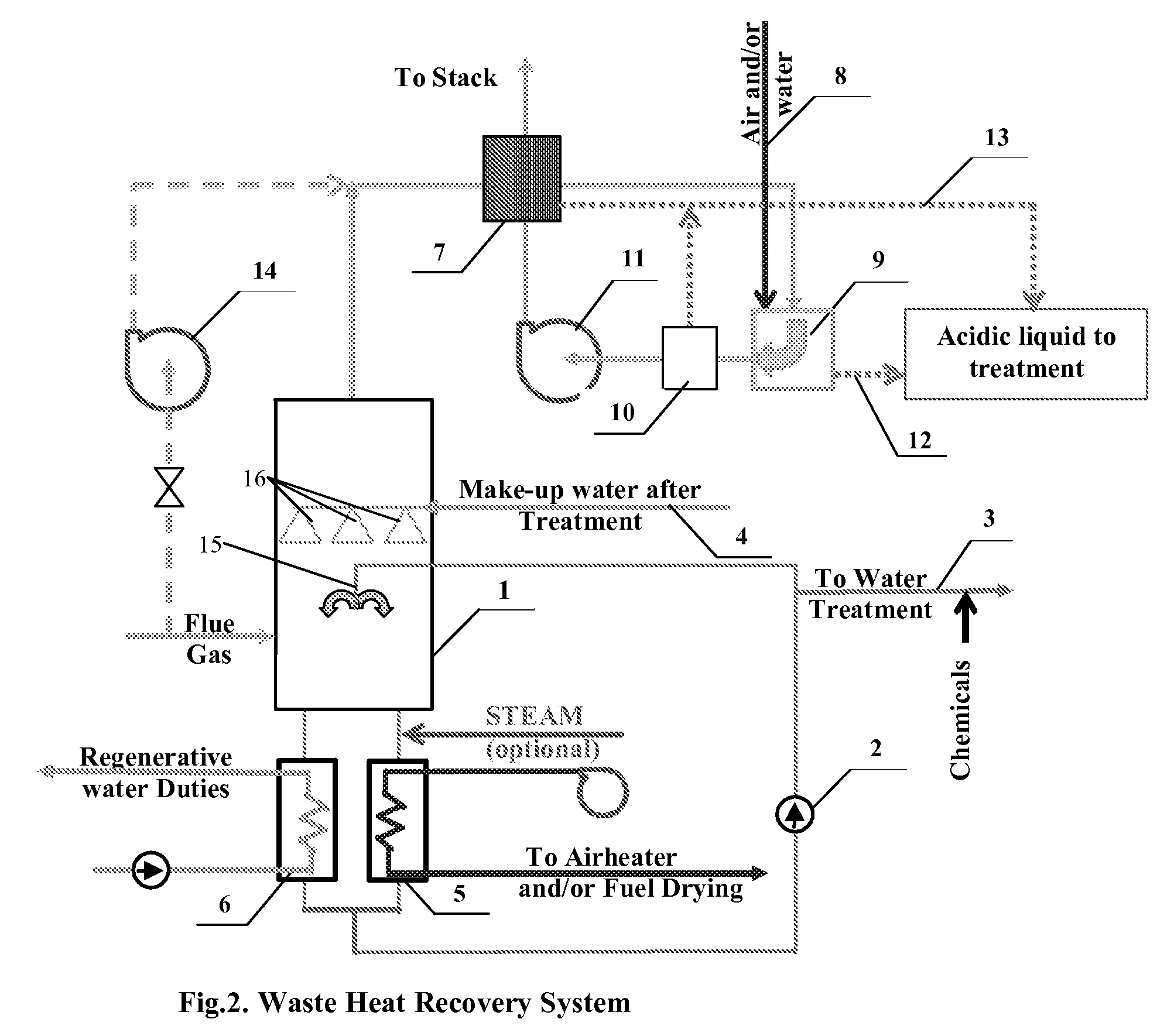Method of efficiency and emissions performance improvement for the simple steam cycle
a technology of efficiency and emissions performance, applied in the direction of mechanical equipment, machines/engines, lighting and heating apparatus, etc., can solve the problems of reducing the efficiency of simple steam cycle, so as to improve the economics of operation and improve the reliability of operation , the effect of greatly reducing the cost of corrosion resistant heat transfer surfa
- Summary
- Abstract
- Description
- Claims
- Application Information
AI Technical Summary
Benefits of technology
Problems solved by technology
Method used
Image
Examples
Embodiment Construction
[0032]The said method of the fuel-to-electric power generation process within the embodiment of the simple steam cycle involves introduction of the additional thermal duties supplementing steam generator input in the form of gaseous reactants in a near-stoichiometric amount of 1) fuel and steam, and / or 2) fuel and preheated carbon dioxide, 3) fuel and reheated combustion products, and / or 4) fuel and mixture of steam, and preheated combustion products to replace a portion of fuel energy required for evaporation of the working media, therefore diminishing fuel consumption and CO2 emissions. The said components of mixtures absorb their energy from a combination of means including working media and products of combustion. The distinct feature of this invention resides in the utilization of energy contained in the steam that passes through the steam turbine performing mechanical work and then extracted before condenser, thus diminishing major steam cycle loss, i.e. loss in the condenser....
PUM
 Login to View More
Login to View More Abstract
Description
Claims
Application Information
 Login to View More
Login to View More - R&D
- Intellectual Property
- Life Sciences
- Materials
- Tech Scout
- Unparalleled Data Quality
- Higher Quality Content
- 60% Fewer Hallucinations
Browse by: Latest US Patents, China's latest patents, Technical Efficacy Thesaurus, Application Domain, Technology Topic, Popular Technical Reports.
© 2025 PatSnap. All rights reserved.Legal|Privacy policy|Modern Slavery Act Transparency Statement|Sitemap|About US| Contact US: help@patsnap.com



